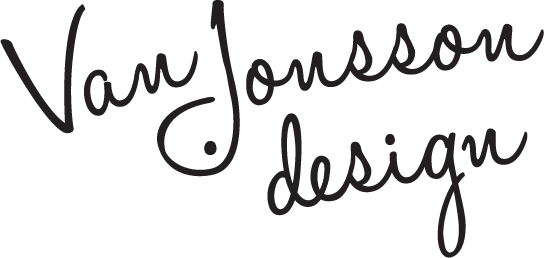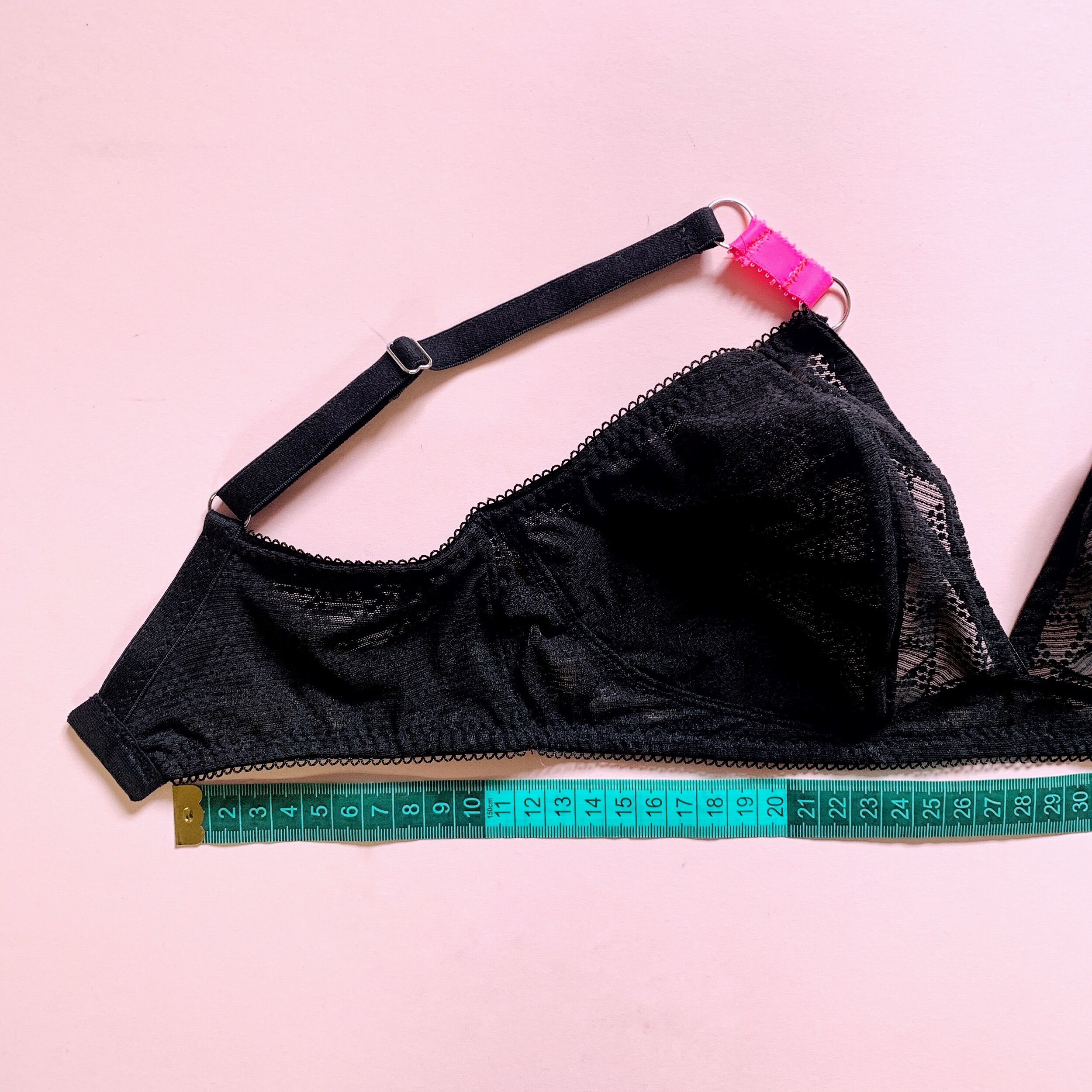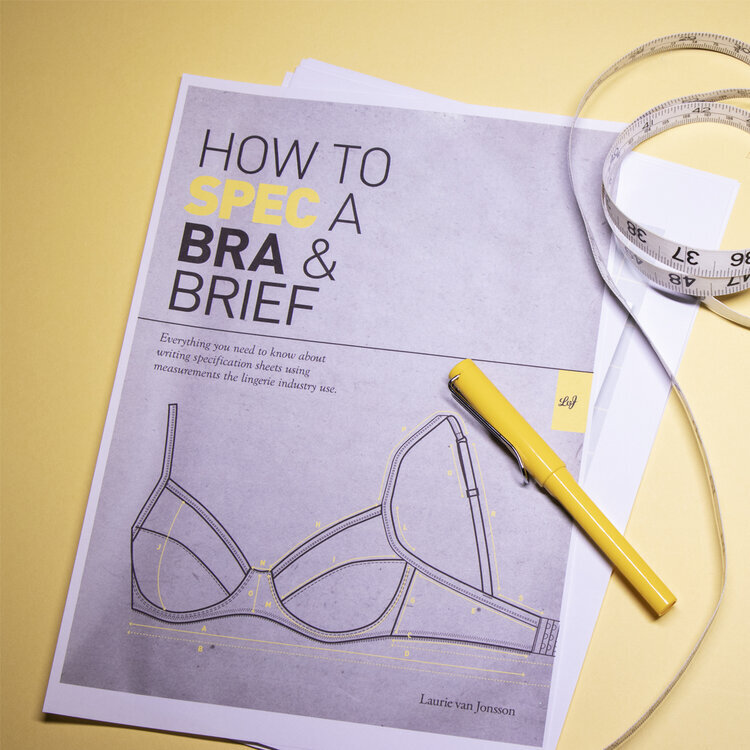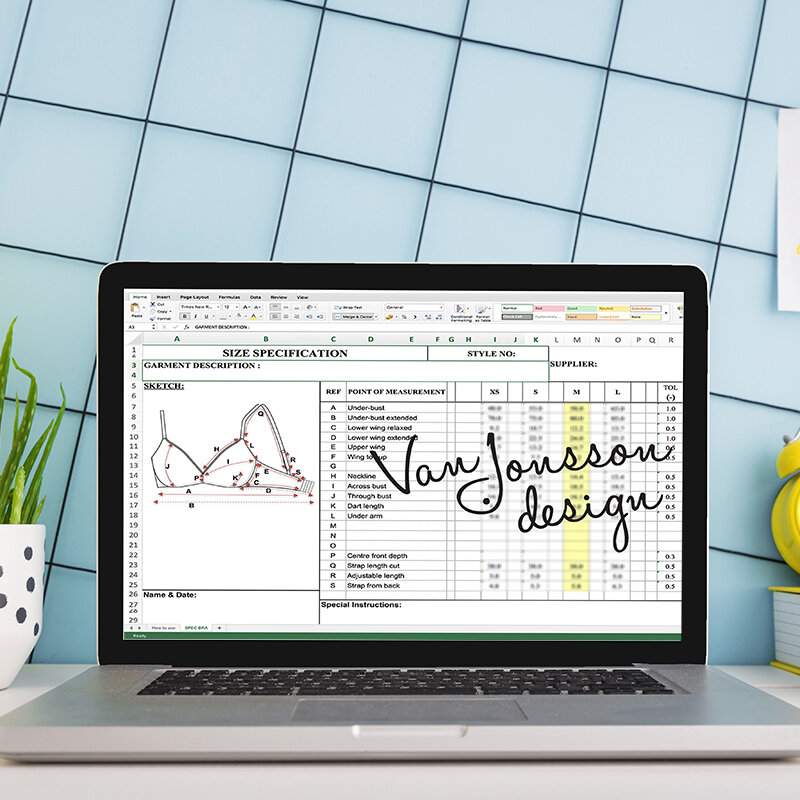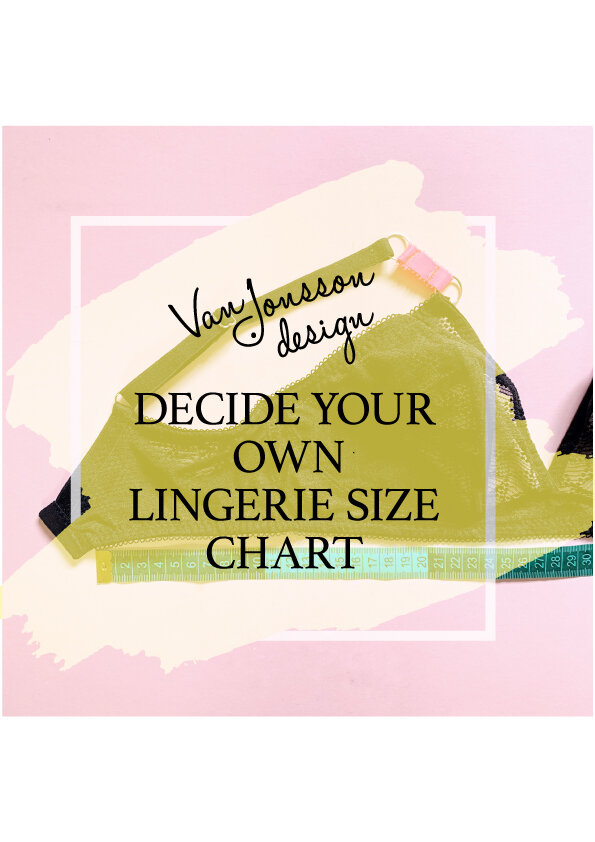Why you should decide your own lingerie size chart
Howdy my friends
This week we will be looking at size charts and why it’s best to decide your own. One of the frequent questions I get asked is “what size do you make your size chart?” and the truthful (and yet frustrating) answer is you make it up - not like literally, but you decide what a size 10 will represent or how a 34B should fit, or what size you think a small should be, heck even some lingerie companies have done away with sizing and just labelled their lingerie 1, 2 ,3 4, etc and just given a size table as a reference.
And that’s the key, whatever size you make a size Small (etc) you need to give a reference to what size you are saying it fits.
The reason? There is no standard size chart - insert gasps!!
I will first go through reasons why a size chart is so complicated then when your head is spinning i’ll go through ways you can implement your own sizing.
in 1939 the government collected body measurements from over 15,000 women, the trouble was the results they used were only from white women and as you were rewarded for turning up, this meant that the majority of women were from a poorer background thereby the measurements aren’t diverse.
By 1958 the size chart which we see today with the dress sizing, it was modified in the 1970s dropping some-of the measurements to keep it simple. In the 1980s there was an attempt to ditch the inch sizing and instead grade clothing by 4cm (UK) this didn’t work out.
Then to completely alter everything some companies started to downgrade their size and what was a size 12 was now a size 8 and added lower sizes like 2, 0, 00. The lowering of sizing is called vanity sizing, so now garment companies are at the stage where sizing is no longer about sizing but a marketing tool. It all got a bit crazy and in the 80s the US withdrew the 1950s size chart and by the 90s tried to make a new standard one. And here lies the next problem every size had shrunk, even though by standard everyone was getting bigger. I’m sure you’ve all heard the saying that Marilyn Monroe was a size 12 but if she were alive today she would be dressed in a size 6 or 8.
Then because is isn’t complicated enough in the 90s they produce Alpha sizing S,M ,L etc this was because stretch garments arrived more on the market, and the industry realised that because of the stretch they could incorporate two or three dress sizes into one letter. It also decreased the amount of sizing a brand had to make.
How Bra Sizing began
Add into this bra sizing which was introduced in the 1930s (for cups) and 1940s (for bands). When bra sizing was first introduced it was recognised that you added four inches onto your under-band as there was no stretch (and we all need to breathe right?), now there is a what is called a “war against four” whereby some companies still use that practise to fit and size their bras and others simple use the rib cage measurement.
The cup letters simply represent the volume of the cup for every inch (2.54cm) difference from the under-band you increase a cup size. So if are wearing a B cup that means your breasts are protruding out by 2 inches from your ribcage. Thats how sister sizing can mask your incorrect fit as a woman wearing a 34B could really be a 30D as the cup volume is the same, but if the 34B bra is riding up her back then her breasts aren’t being supported and she’s basically wearing them under her armpits, but then she tries on a 30D and her boobs are pointing more forward because the cups are moulding her breasts more forward and she is now technically having her boobs protrude 4 inches from her ribcage but it’s all going forward and being supported rather than non supported boob making their way under your arms, try a smaller size band and bigger cup bra and you see your silhouette change. .
There there is a problem with lettering a US 32DDD is a UK 32E, EU 70F, AU/NZ 10E, IT 2F FR/ES 85F and given that in France they usually grade the under-band by 4cm in some companies (rather than the 5cm in the UK) you might as well set fire to the whole sizing system.
You yourself might well know that say if you are a 32C in one shop it’s far too small in another and the fit is awful, this is because as well as all the complication on sizing, the brand is sizing to their demographics.
Having worked for multiple high street stores, I can tell you that a 34B in Topshop differs from a 34B from Next and differs from a 34B from M n S - why? Because to begin with they are fitting it on completely different age and body shaped models. (Topshops core customer is 16-30, and M n S core customer is 35-55).
What I would recommend you do
Work out for core customer and fit your lingerie on them, what you class as a size 10, or size S (or however you size) will be current for your core customer. Then work out a size chart for your customer, for example if your size 10 model(s) has a waist 28 inch (72cm) then that is your size you are working with, and grade from there.
Each brand on their website has sizes what they think represent their core customer to enable the customer to match up their measurements to your size chart. Some size charts show just one measurement and others show an expansion measurement e.g 26.5-28.5 equals Small (68-73cm) as the body increases by 5cm on the round between each size.
If you are still unsure just type into google body size chart and you will see so many different ones for the same size that you will begin to realise that you can make your own size chart. Just stick to it.
Regarding what type of sizes to produce I have always produced in the Alpha size method (S, M ,L) in my brand as I felt it wasn’t constricting and flowed better between different countries, and because you have more play between sizes (a size M could be size 10 or size 12 depending on your body shape) I felt that people were flexible on how it fitted.
Bra Sizing
Regarding bra sizes, if you are using a wire or moulded cup then the width of the cup is predetermined by the factory of that wire (although different wires can alter from 1.2cm - 2.1cm in the length) so once you fit what you think say is the perfect 34B then simply when you grade up that will be your 34C (the body increases 5cm on the round, 2.5cm on the half and depending on the wire grade the cup with increase approx 1.25cm in width and 1.25cm in depth).
If you are looking for measurements to start your pattern, then I wrote an article on bra sizing here.
If you can’t do a size calculator on your website then you can do led suggestions ie “if you measure 30inch under-bust and 34 over bust then we suggest wearing a 30D” or which ever method of sizing you are going to use. I wrote a bit about getting your bra size awhile back here.
However you start and what ever method you decide for your brand, being consistent and being open about your sizing will lead the customer to know exactly what they are buying and what size, so you will receive less returns. But at the end of the day, what fits one customer may not fit the next as they want.
How I dealt with the irregular sizing
I launched my brand specialising in small backs, big boobs, because back in the Nineties and Noughties I could not find lingerie that wasn’t beige, black or white in my size, and the briefs were massive because obvs if I’m buying a big bra I ‘must’ need big knickers! Fitters often fitted me as a 36D and it was all a bit disheartening.
I usually measure 31 inch under-band and 36 across bust which depending on the brand I wear a 30DD, 30E or occasionally a 32DD (although these tend to not be on the loosest hook), because of this I decided my sizing method wasn’t going to be to +4 but be the measurement taken from around the under-bust. Just like you wouldn’t add four to your jeans I didn’t want to add +4 to my bra sizes. At that point in 2005 there wasn’t a debate or a ‘war against four’ going on, so it was a little bit like I was going against the tide with my size chart but I but clear instructions on the website and showed my bras that were fitted using the 0+ method and then bras shown using the +4 method, my aim was to try and educate what a good fitting bra could look like rather than which method you were use to.
The thing about bra fitting is to guide a person into a starting size, what you think would work for them and go from there.
As just because the +4 method doesn’t work for me personally (although I have designed bras for companies that use that method) or many others out there, we have to accept that the 0+ method isn’t going to work for everyone - when you are dealing with smaller size boobs the +4 doesn’t seem as such an issue here is why: the weight of the breast doesn’t need to be so supported by the under-band as there is less volume (that’s not to say you don’t need a well fitting bra though).
Let me explain: After each child I had have after about between 10-14 months after I am skinnier than I was before I fell pregnant (it all returns back normal after two years), at my smallest I measured 29 inch under-bust and 34 over bust which took me to wearing a 30D and what I found though was that the underwires dug into my sternum and the elastic sometimes felt tight, so for the first time I think in my life I was buying 32Cs with the freedom of walking into high street stores and being able to buy most styles (which if you haven’t experienced that in over twenty years your arms are ladened for the changing rooms!) Because I didn’t have the weight or the density of my boobs to support I could afford the under-band to be looser (yet still fit) than I can now.
In summarising this, there is no right way for your size chart, the industry is screwed up on their sizing so you don’t have to worry about meeting sizing standards you just have to decide what sizing you are going for and still make it accessible for women to understand the size that they are buying. Go with your gut, you can’t be everything to everyone. Or fit everyone, do what represents your brand the best and make it clear to customers your sizing.
If you would any further reading or help check out the spec book, which will guide you through the difference that each size is graded by, or check out the automatic spec which will work out all your sizes for you (obviously you have to decide what your size M or size 10 or 34B etc size will be )
If you wish to come back and read later please pin below
